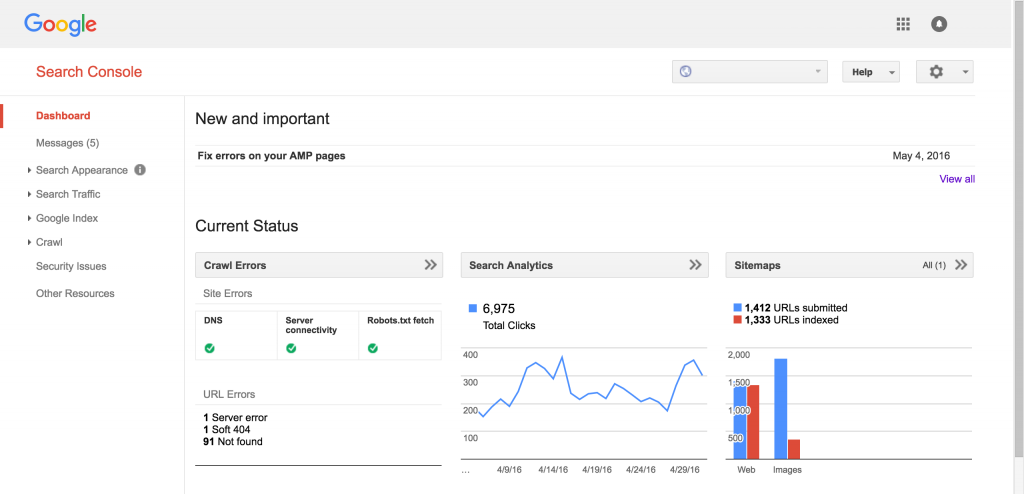Why did your website’s traffic drop in June?
If your website had a major loss of traffic in early June, you’re not alone. Millions of website owners, including some major news sites, were left scratching their heads after Google algorithm’s June 2019 Core Update.

When you’re using Google Analytics or Google Search Console to monitor your website’s traffic and rankings, you’ll occasionally notice major changes to your statistics.
Sometimes they’re for the better, and your recent flurry of publishing great content gets rewarded with a rise in rankings, traffic and conversions. Other times, you’ll see big drops in traffic when you haven’t changed much on your site, and you’re left confused about what to do next.
If you’re not monitoring your website’s performance on Google Analytics, it’s possible that you had a hunch that June 2019 was “a bit slow” in terms of eCommerce sales but you weren’t sure why. The June core update could be the reason.
Let’s take a look at Google’s June 2019 Core Update and how it might have affected your website.
What we know about the Google June core update so far
Google rolled out the June 2019 Core Update from 3rd June to 8th June 2019. In an unusual move Google announced the update on 2nd June before it happened, which hints that they knew it would cause major drama for website owners.
As early as 4th June, website owners around the world started noticing major changes to their rankings, including significant loss of traffic.
The UK’s Daily Mail reported a 50% drop in traffic for a few days after Google’s June 3rd Core Update, despite not making any significant changes to their website, while other UK news publications saw a rise in traffic.
Daily Mail’s Head of SEO posted the question on Google’s Webmaster forum, asking for information about the update, while Webmaster users took the opportunity to criticize Daily Mail’s ad content as the cause.
Most importantly, Google’s John Mueller says the June Core Update is a general update about how Google processes data and rankings, to show the most relevant pages for a user’s search query.
Other commentators have speculated that there have been changes to how Google understands and ranks natural language search, such as voice search questions such as “How do you knead dough?” which work well with image and video results.
All the while, Mueller says there’s “nothing to fix” on websites that have suffered a loss of traffic.
At the same time, Google rolled out a search diversity update
After Google’s Diversity Update on June 4th-6th, you usually won’t see more than two listings from the same website in Google’s top results. In reality, the change seems to be very minor.
Google will continue to show more than two results when they’re relevant. For example, if users are searching for a specific brand name or product code number, they’re more likely to see several results from the same website, than if they search for something generic or multi-branded where Google offers options to buy from various sites.
Why did my website’s traffic drop in June 2019?
As always, Google remains tight-lipped about what seems to be a major algorithm change. They’re only sharing vague snippets of information, such as saying that the update is general and that “there’s nothing you need to fix”.
But website owners remain confused and frustrated about their drop in rankings and drop in visitor traffic, which usually also means a drop in sales for eCommerce websites.
And a drop in sales really hurts when you’re a small business.
While Google says there’s nothing specific that website owners need to fix to restore lost rankings and traffic, Google’s John Mueller suggested website owners should assess their sites more broadly:
- how do users see your website?
- how useful is your website?
- how good is your content?
What they mean is: focus on the quality of your website and its content. The critical elements are a good User Experience (UX) and the quality and relevance of your content.
What makes strong content?
Rather than thinking about how to make a page rank well, focus on providing a great experience for your visitors by providing helpful and interesting information.
In a nutshell, they’re referring to the basic principles of solid website design and quality content:
- Credibility: does your website show you as an authority or expert in your field?
- Trust: if you were a customer on the website, would you trust it with your credit card details?
- Value: does the content offer valuable information to the reader?
- Mobile usability: is the website easy to navigate on mobile, and is it mobile responsive?
- Security: is your website secure for users and the information they transmit?
- Speed: does the website load quickly, especially on mobile data networks?
And many more key elements discussed in this Google Webmaster article from 2011 about how to build high quality content – it’s an oldie, but a goodie, and the principles still apply today.
